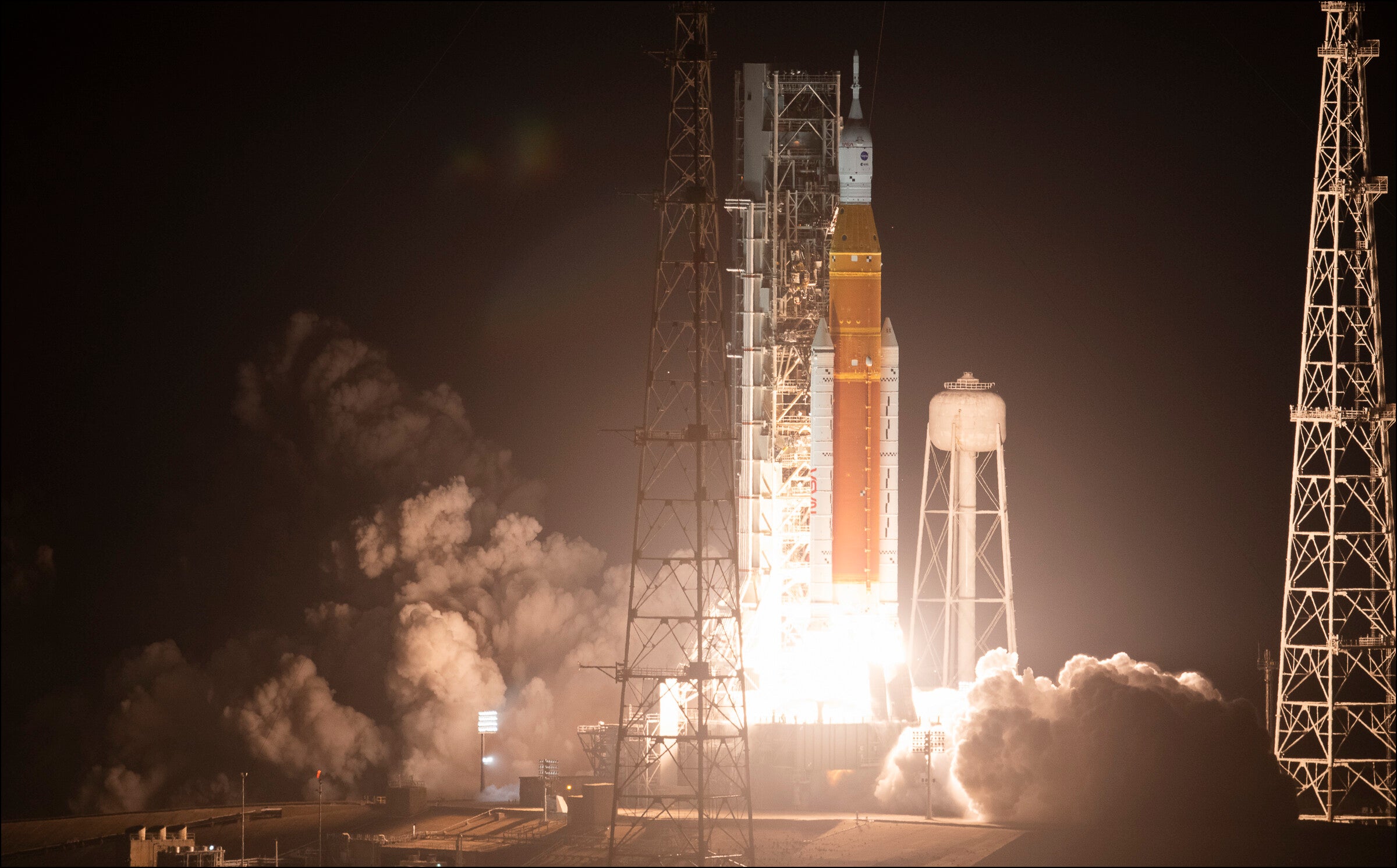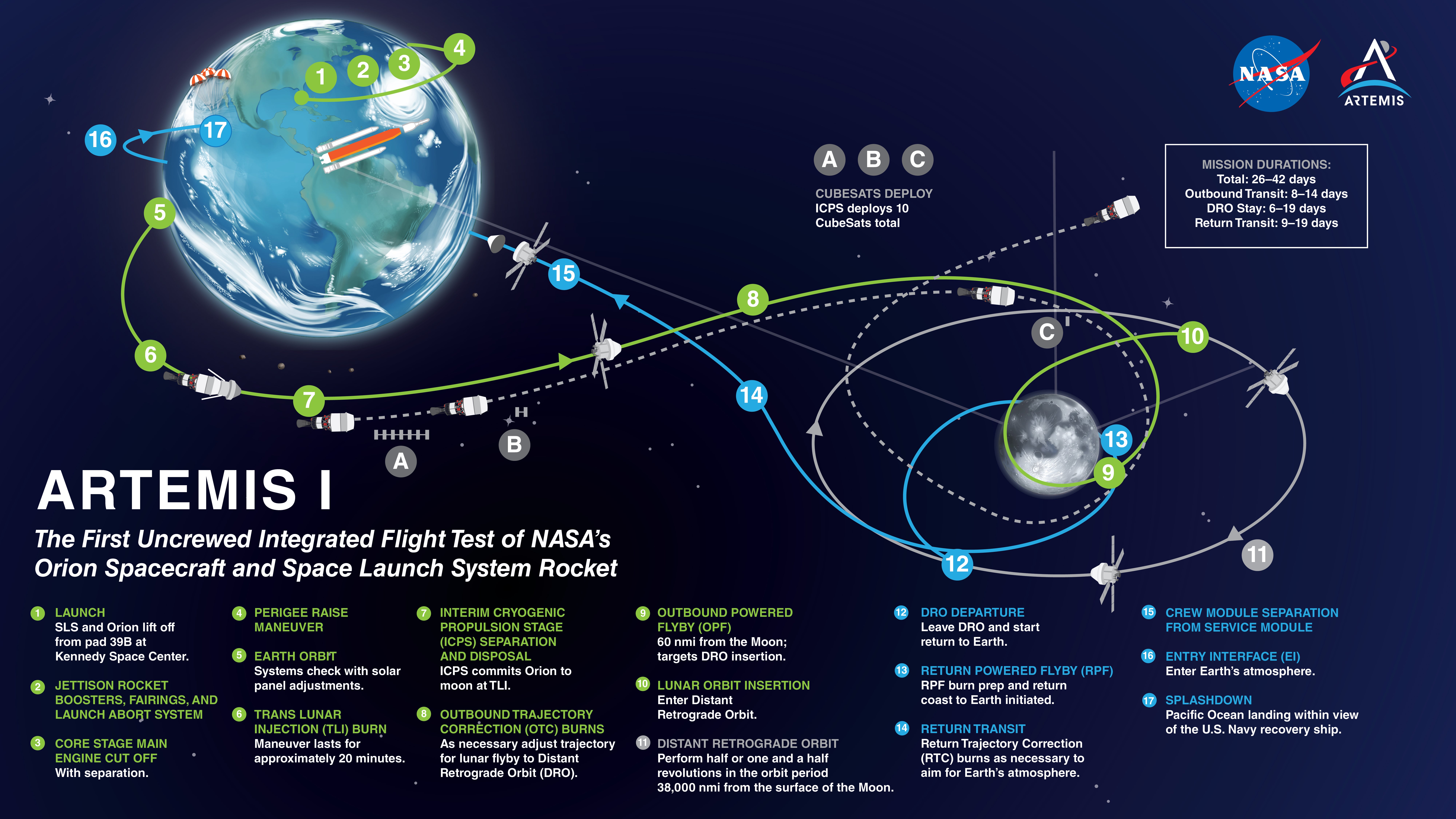What’s next for Nasa’s historic Artemis I mission following Wednesday’s launch?
After years of development and multiple delays, Nasa’s Artemis I is finally in space, but the mission is just beginning

Your support helps us to tell the story
From reproductive rights to climate change to Big Tech, The Independent is on the ground when the story is developing. Whether it's investigating the financials of Elon Musk's pro-Trump PAC or producing our latest documentary, 'The A Word', which shines a light on the American women fighting for reproductive rights, we know how important it is to parse out the facts from the messaging.
At such a critical moment in US history, we need reporters on the ground. Your donation allows us to keep sending journalists to speak to both sides of the story.
The Independent is trusted by Americans across the entire political spectrum. And unlike many other quality news outlets, we choose not to lock Americans out of our reporting and analysis with paywalls. We believe quality journalism should be available to everyone, paid for by those who can afford it.
Your support makes all the difference.After years of development, billions of dollars spent, two scrubbed launch attempts and delays due to two hurricanes, Nasa’s Artemis I mission finally lifted off from Cape Canaveral Space Force Station in Florida early Wednesday morning.
The long awaited flight of Nasa’s most powerful rocket since the Saturn V of the Apollo era, the Space Launch System (SLS) launched at 1.47am EST Wednesday morning. By 3.42am, the rocket’s upper stage had completed an 18-minute trans-lunar injection burn, accelerating the uncrewed Orion spacecraft on a course for the Moon at more than 22,600 miles-per-hour.
So, what’s next for Artemis I?
Artemis I is a test flight for the two cornerstones of Nasa’s Artemis Moon program, the SLS rocket and Orion spacecraft, along with the European built service module attached to Orion.
The first part of that test flight, the successful lift off of the 322-foot-tall SLS rocket, is in the bag, so the next few weeks are all about Orion. The spacecraft will now fly to and beyond the Moon before returning to Earth 25 days from now, splashing down in the waters off the coast of Southern California on 11 December — if all goes well.
Orion will cover the distance to the Moon in just six days, making a close pass — within about 60 miles — of the lunar surface on 21 November and using the Moon’s gravity to slingshot the spacecraft to nearly 40,000 miles beyond the Moon in a distant retrograde orbit.
The purpose of Orion’s week-long cruise beyond the Moon is to test the spacecraft’s flight systems ahead of the crewed Artemis II mission, which will conduct a similar flyby of the Moon, scheduled to launch in May 2024. Orion is also host to a suite of science experiments, including experiments designed to better understand how future Artemis missions will impact the health of astronauts.
The Orion spacecraft currently en route to the Moon is “crewed” by three mannequins.
Commander Moonikin Campos wears radiation sensors designed to measure the solar and cosmic radiation exposure future astronauts can expect when flying beyond the protective shield of Earth’s magnetic field, while two additional mannequins, dubbed Helga and Zohar, contain sensors that mimic human bones and soft tissues. Zohar wears an anti-radiation vest, while help does not, and scientists will compare how radiation has affected the “tissues” of each mannequin once they return to Earth.
Orion will use its engines to exit the distant retrograde orbit on 1 December, making another close path of the lunar surface four days later followed by another course correction maneuver to set the spacecraft on a path home to Earth.

Orion’s return to Earth is the most important part of the Artemis I mission, as it centers around testing the spacecraft’s heat shield.
Orion will reenter the atmosphere at nearly 32 times the speed of sound, or around 25,000 miles-per-hour, much faster than spacecraft returning from the International Space Station, which average around 7,000 miles-per-hour as they hit the upper atmosphere. Orion will slow down by trading all of that kinetic energy for heat through friction, and the heat shield will see temperatures around 5,000 degrees Fahrenheit.
Testing Orion’s heat shield is a high priority for Nasa, as it cannot launch human crew aboard the spacecraft if the heat shield cannot hold.
Assuming the heat shield holds, Orion will deploy three parachutes to further slow the falling spacecraft down from more than 300 miles-per-hour to a modest 20 miles-per-hour before settling into the waters of the Pacific Ocean off the coast of Southern California.
After recovering Orion, Nasa engineers and scientists will pour over the data recorded during the flight and try to apply lessons learned to future Artemis and other space missions. The next steps for Artemis will be the Artemis II flight in 2024, which will carry a crew of four around the Moon and back, and then Artemis III currently scheduled for sometime in 2025.
Artemis III will see four astronauts fly to the Moon aboard an Orion spacecraft, of which two astronauts will descend to the lunar southern polar region aboard a customized SpaceX Starship lander vehicle. It will mark the first time humans have set foot on the Moon since the Apollo 17 mission of 1972.
Join our commenting forum
Join thought-provoking conversations, follow other Independent readers and see their replies
Comments